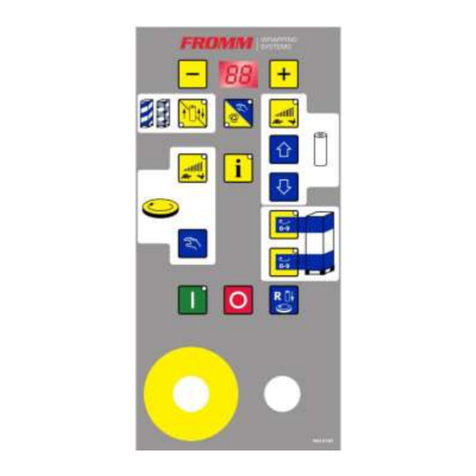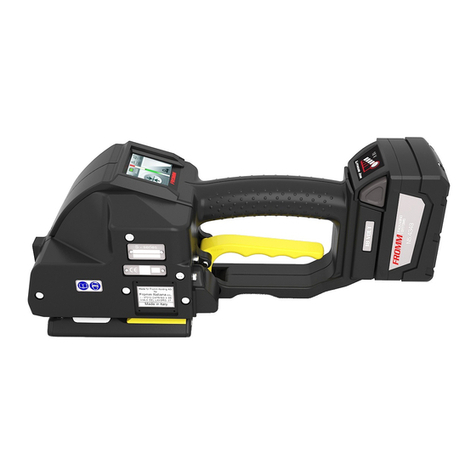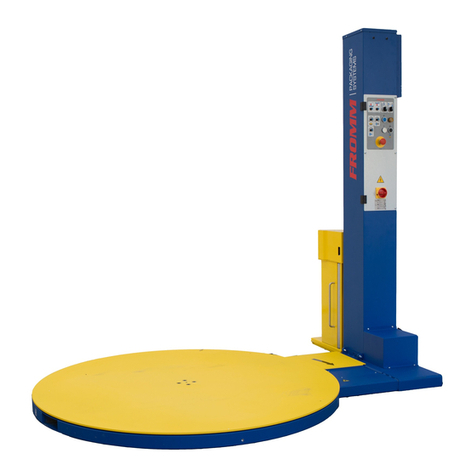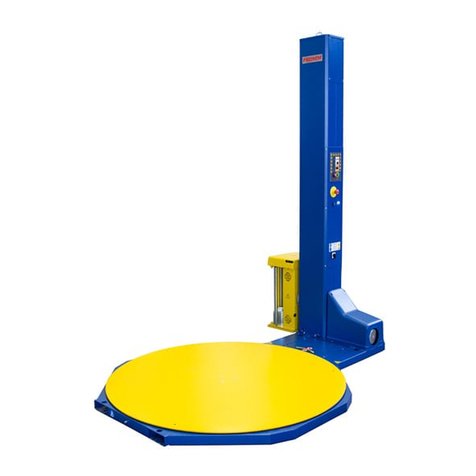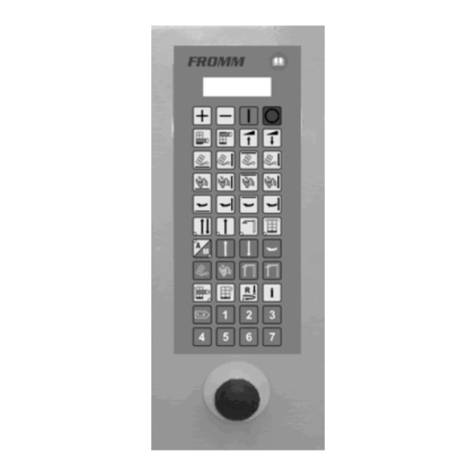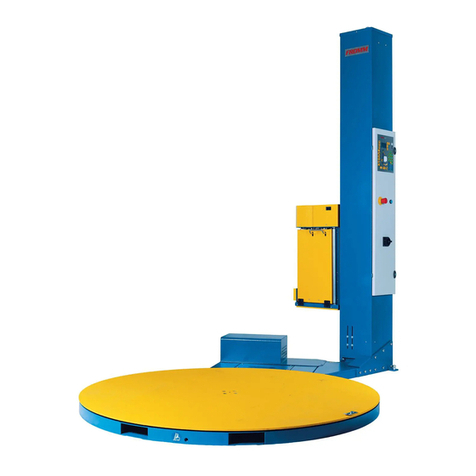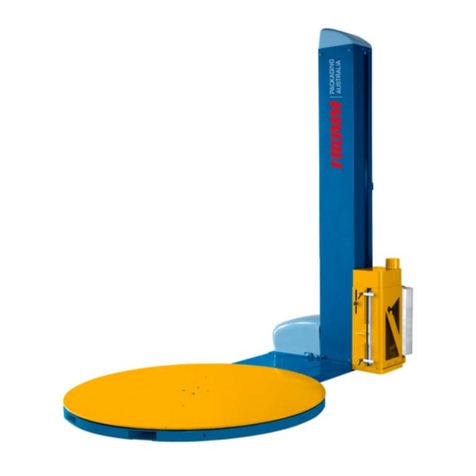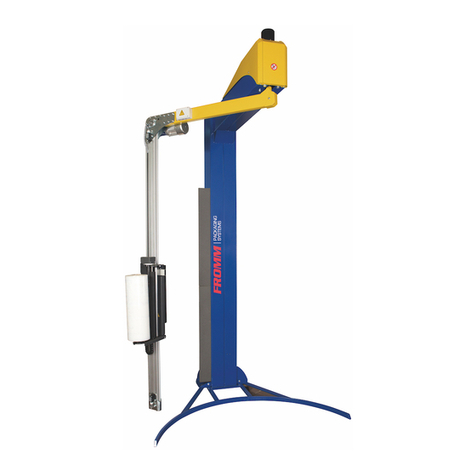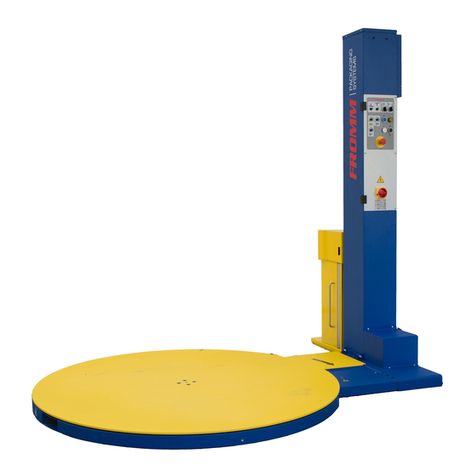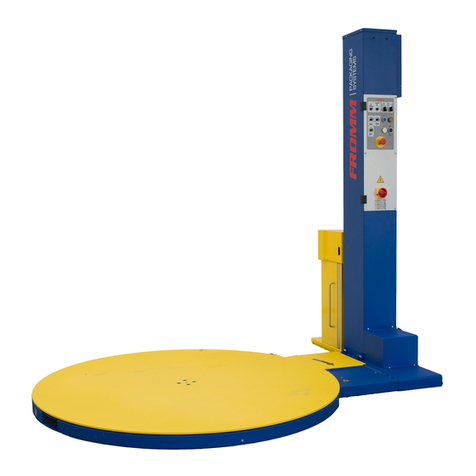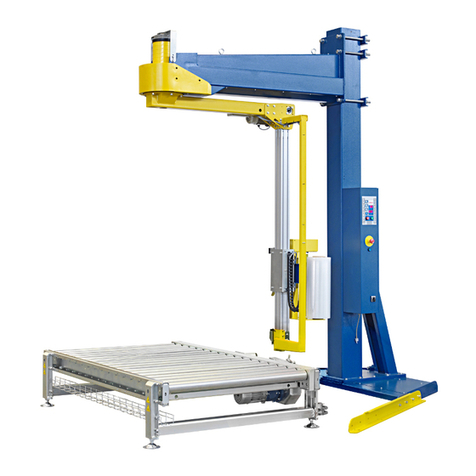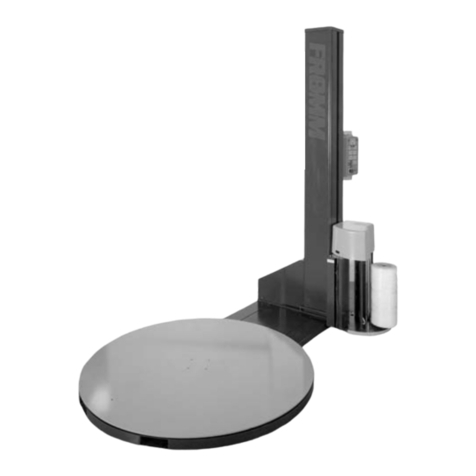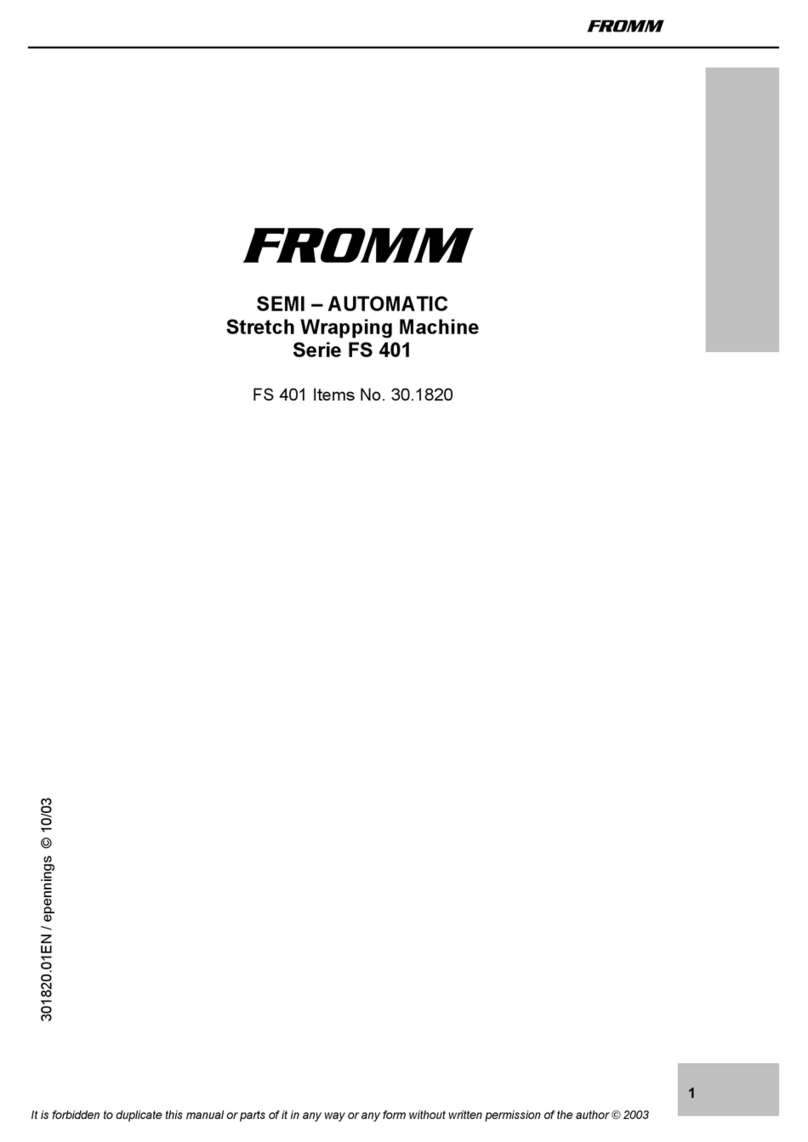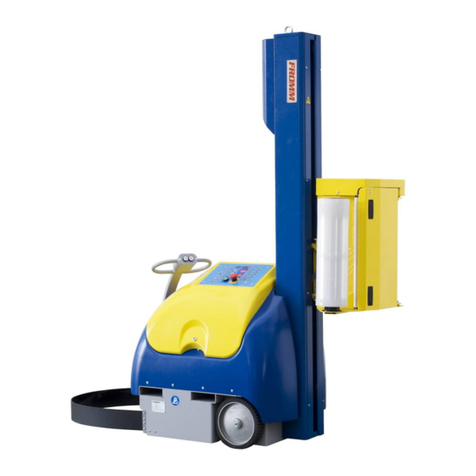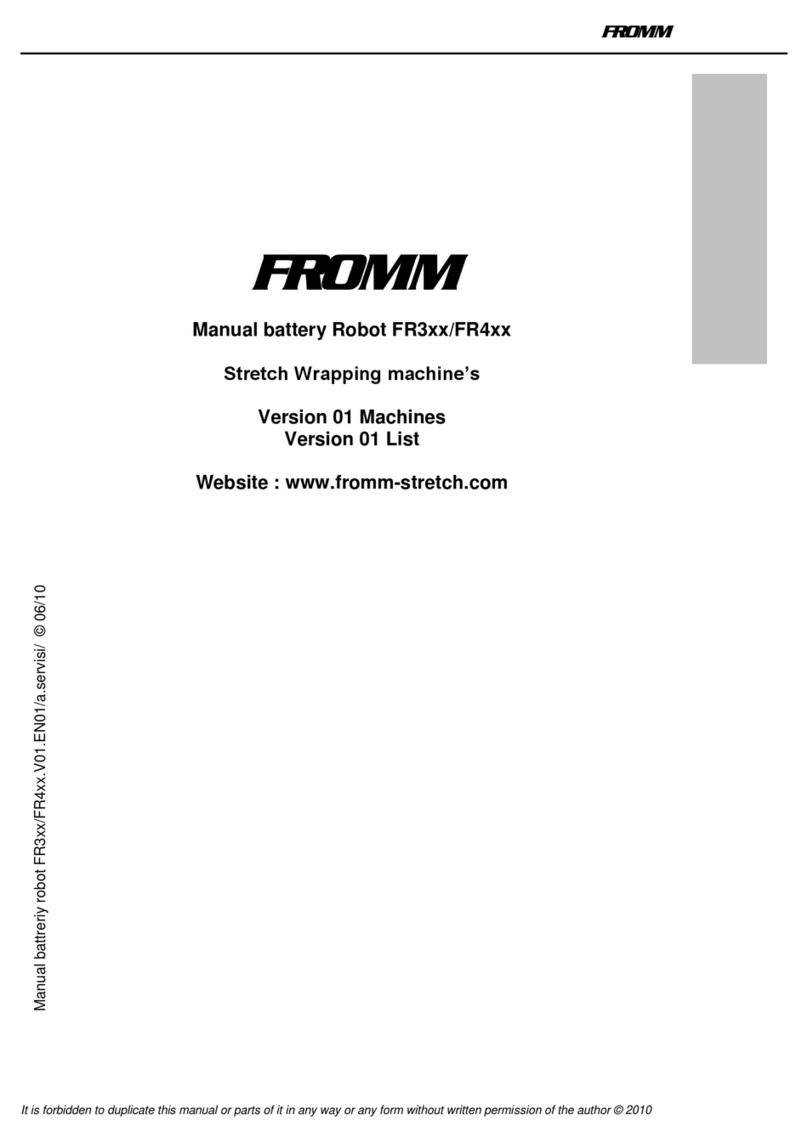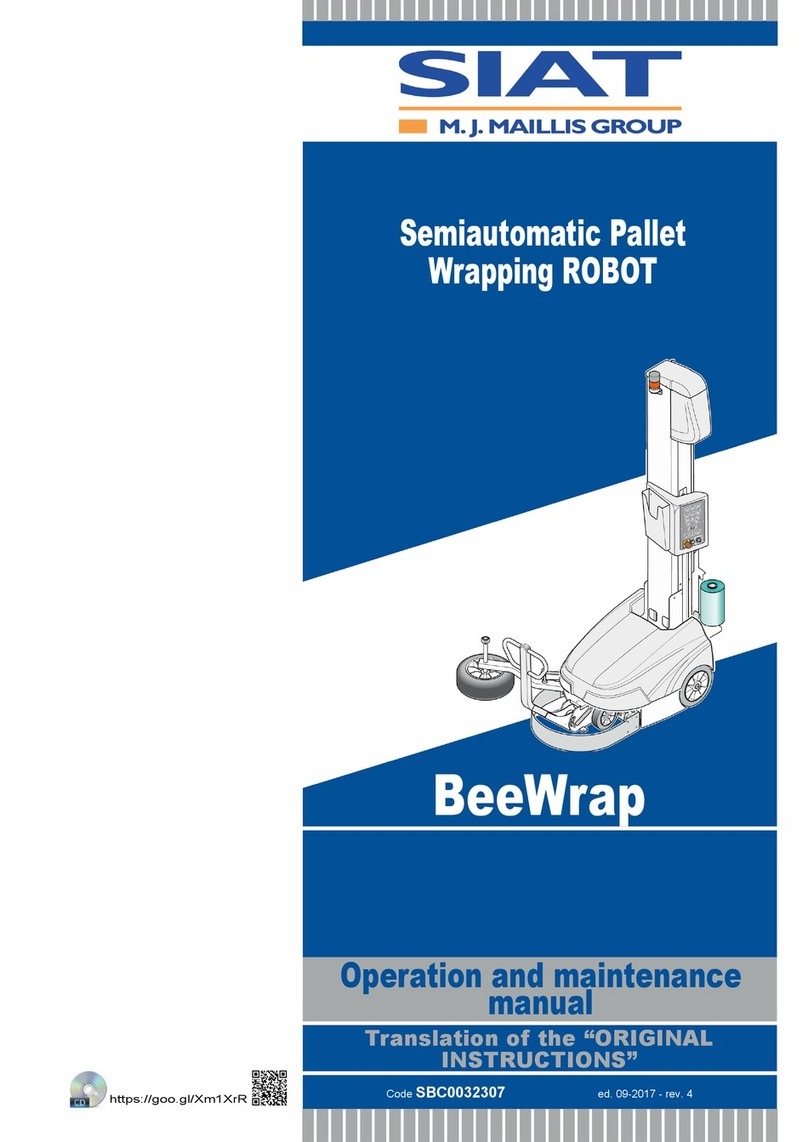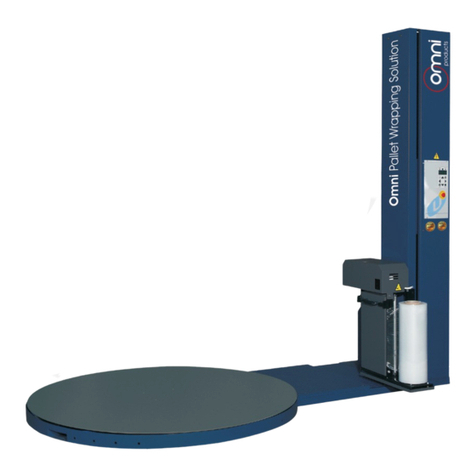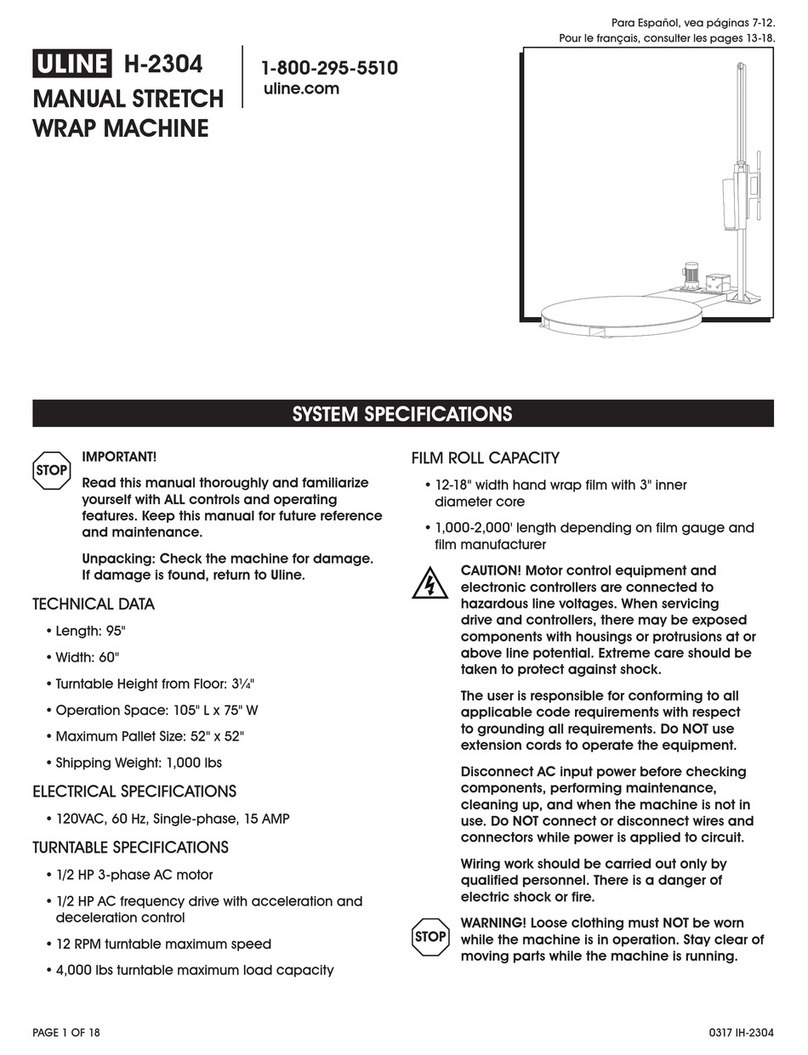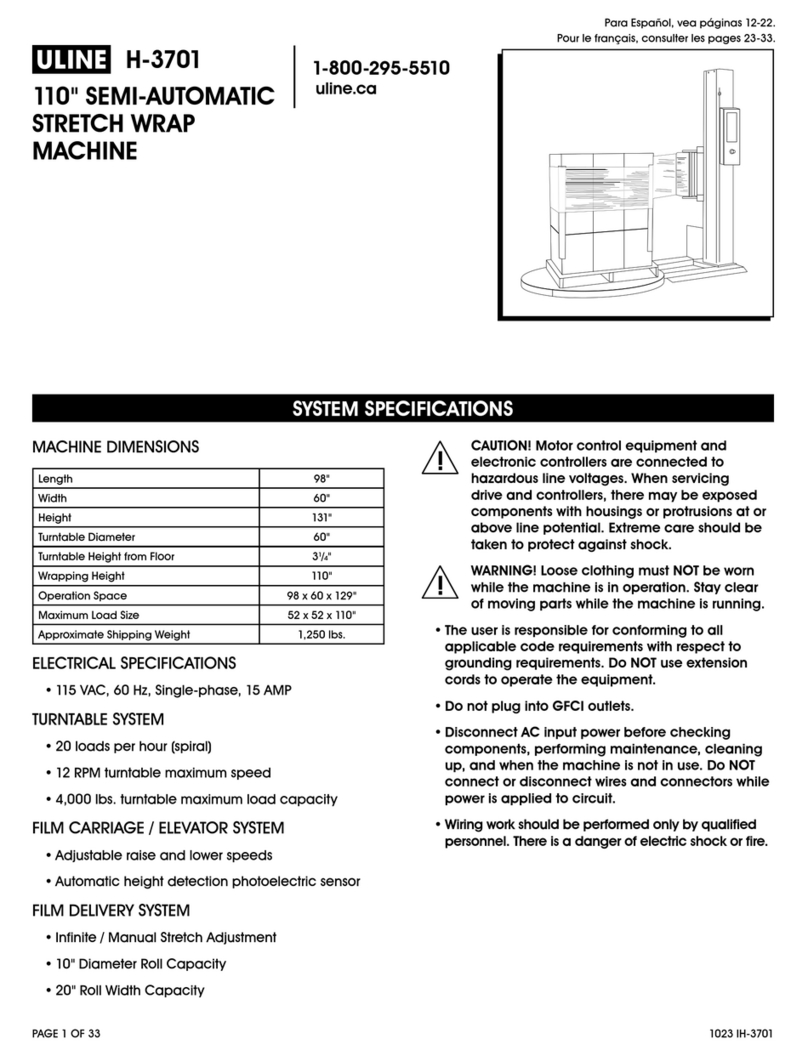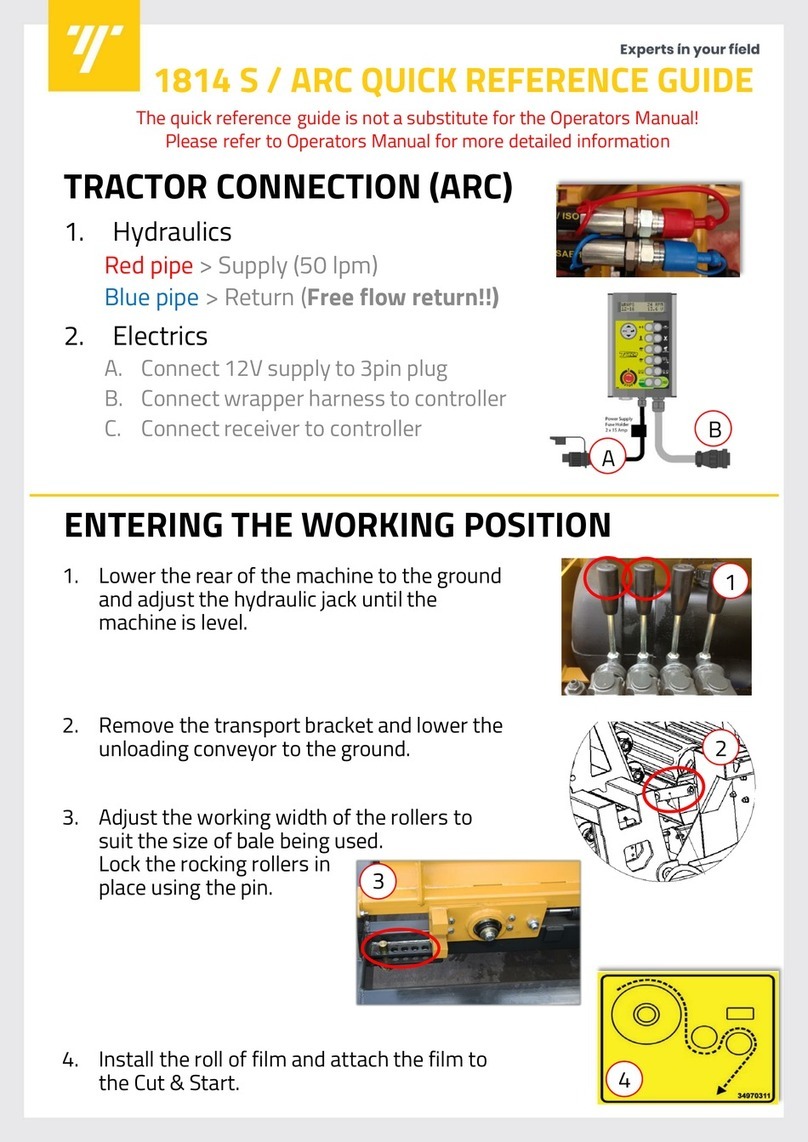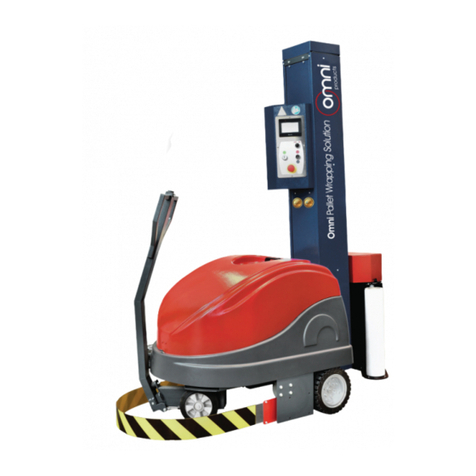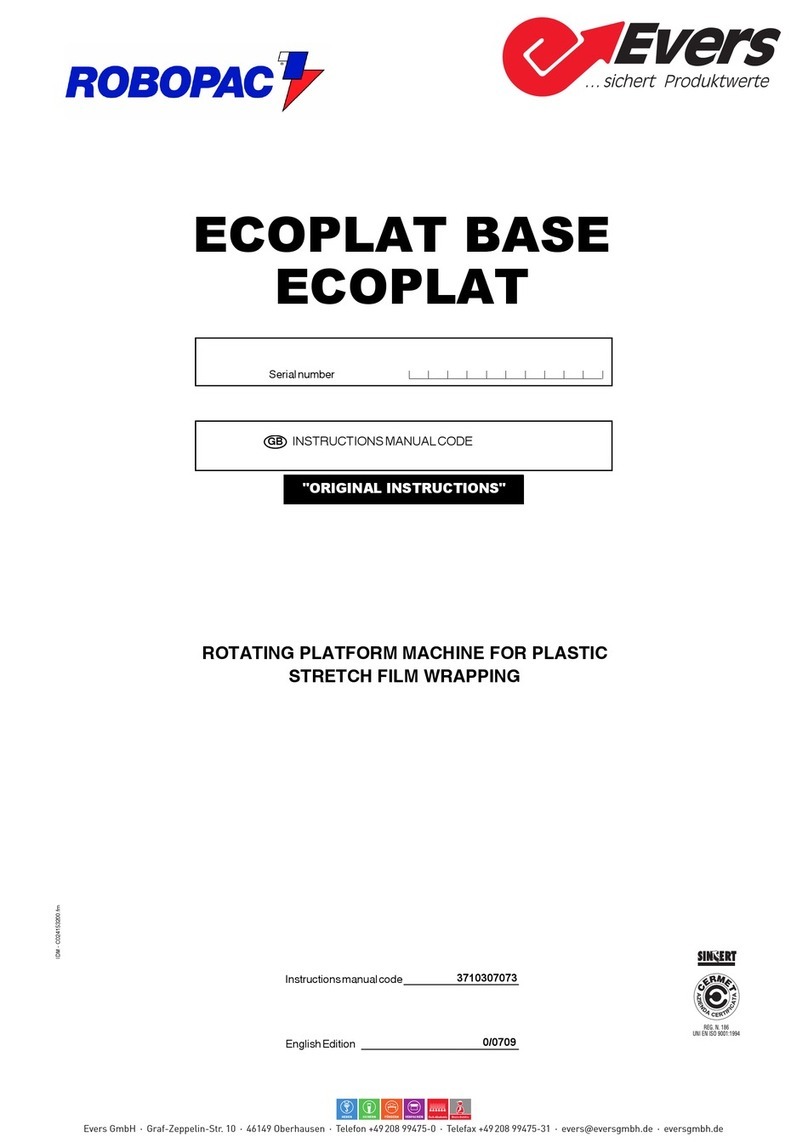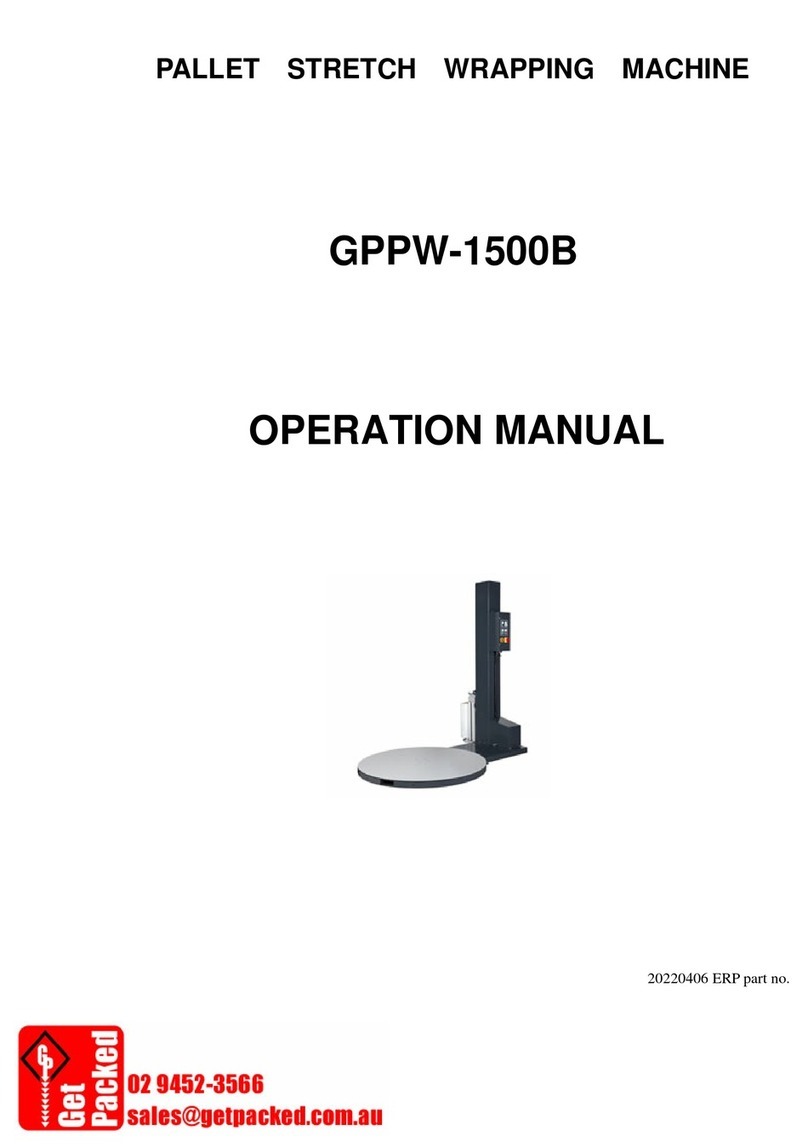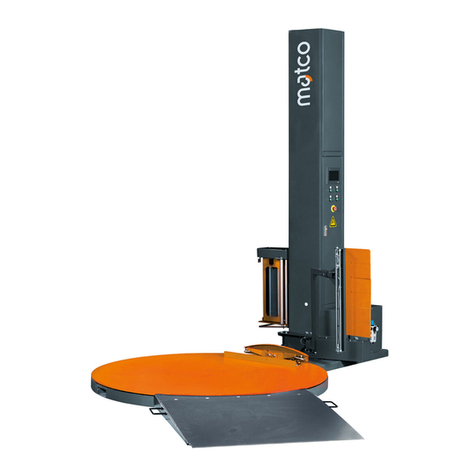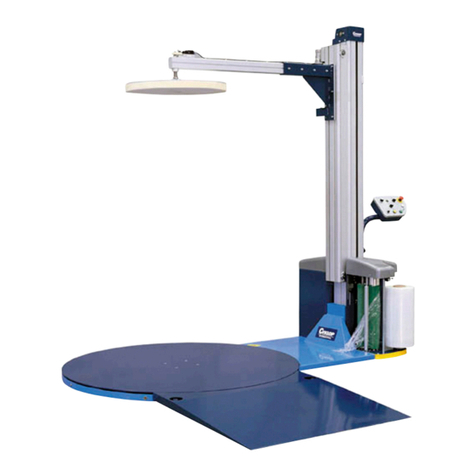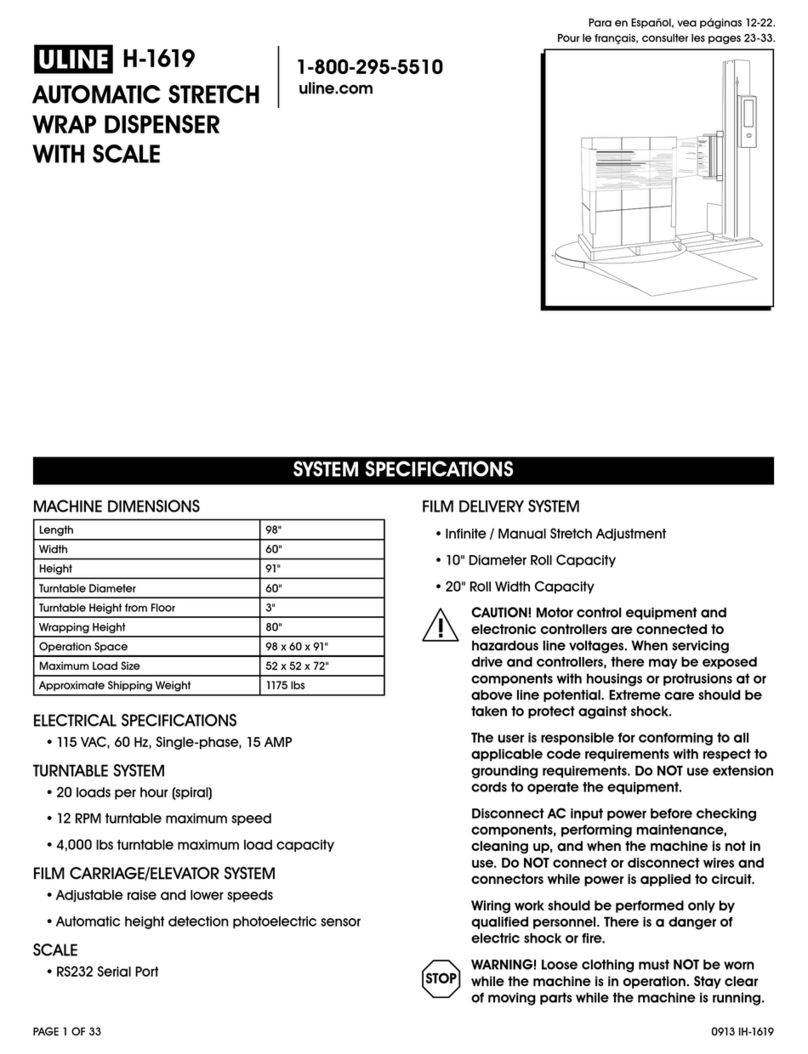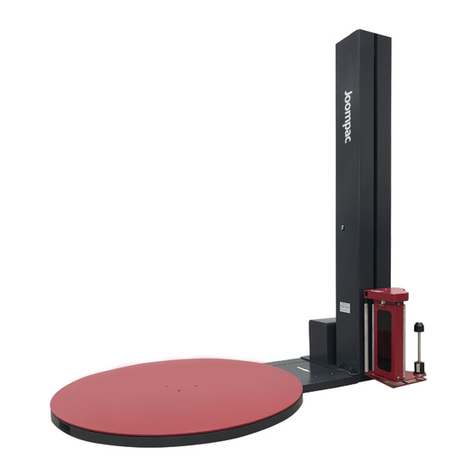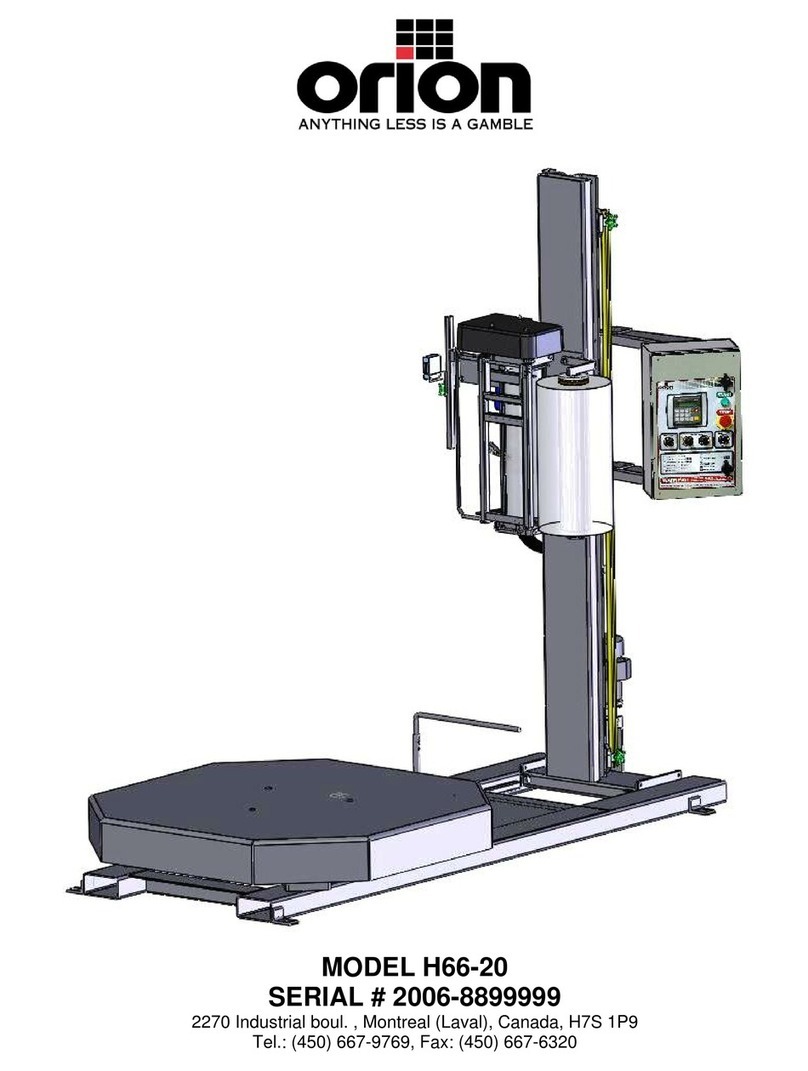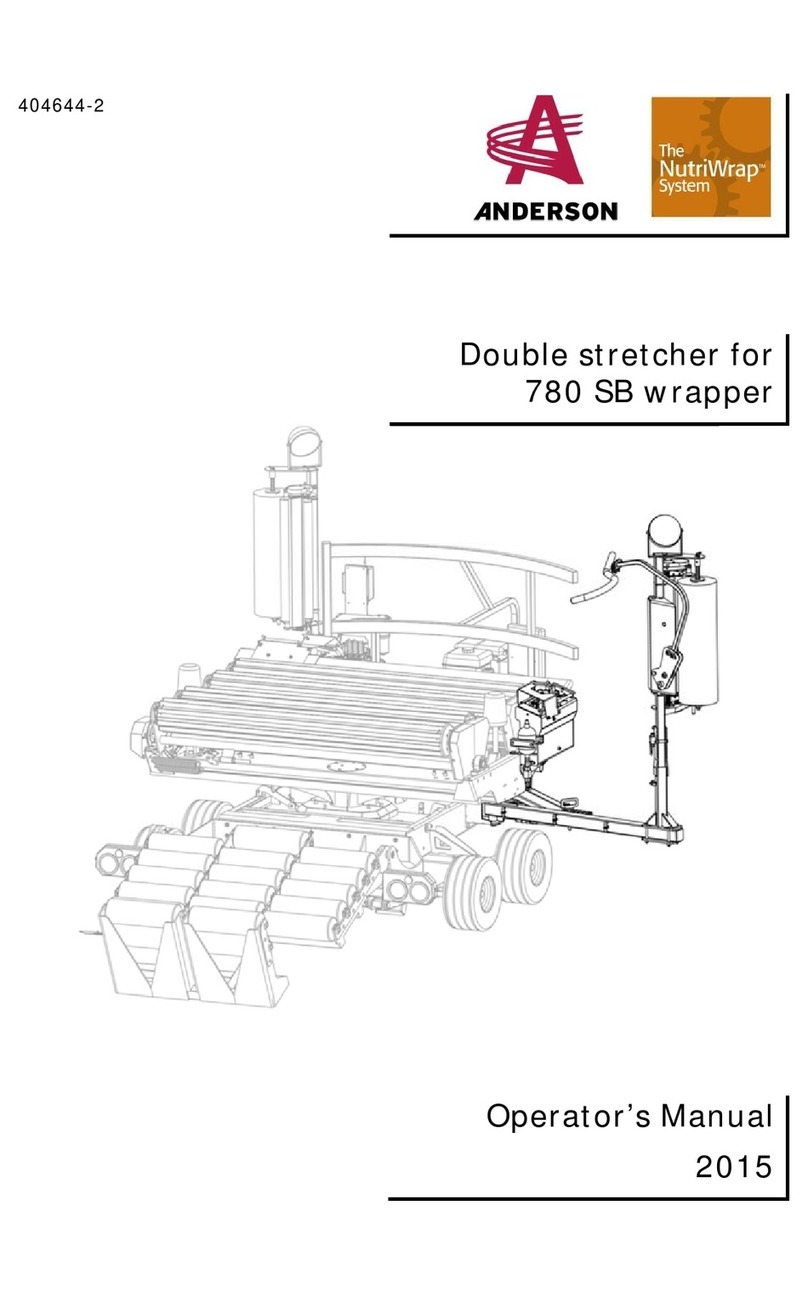
8
1. SICUREZZA E ANTINFORTISTICA
1.1 AVVERTENZE GENERALI DI SICUREZZA
• Prima di iniziare il lavoro l'operatore deve essere
perfettamente a conoscenza della posizione
e del funzionamento di tutti i comandi e delle
caratteristiche della macchina; vericare quoti-
dianamente tutti i dispositivi di sicurezza presenti
sulla macchina.
• L'operatore, prima di procedere alla partenza
del ciclo di lavorazione, deve assicurarsi dell'as-
senza di PERSONE ESPOSTE nelle ZONE
PERICOLOSE.
• Il datore di lavoro deve disporre e fare impiegare
dispositivi di protezione individuale conforme-
mente a quanto indicato sulla Direttiva 89/391/
CEE (e successive modiche). Durante l’uso e
la manutenzione della macchina è Obbligatorio
l'uso di dispositivi di protezione individuale (DPI)
quali calzature e tuta di sicurezza, approvati per
ni antinfortunistici.
• Le zone di stazionamento dell'operatore vanno
mantenute sempre sgombree pulite da eventuali
residui oleosi.
• E' vietato avvicinarsi agli elementi mobili della
macchina, quali carrello e tavola rotante,quando
la macchina è in lavorazione.
• E' assolutamente vietato far funzionare la mac-
china in modo automatico con le protezioni sse
e/o mobili smontate.
• E' assolutamente vietato inibire le sicurezze
installate sulla macchina.
• Le operazioni di regolazione a sicurezze ridotte
devono essere eettuate da una sola persona e
durante il loro svolgimento è necessario vietare
l'accesso alla macchina a persone non autoriz-
zate.
• Il locale di installazione della macchina non deve
avere zone d'ombra, luci abbaglianti fastidiose,
nè eetti stroboscopici pericolosi dovuti all'illu-
minazione fornita.
• La macchina può lavorare in aria libera a tem-
perature ambientali da + 5°C a + 40°C.
• La macchina deve essere usata esclusivamente
da personale qualicato.
LA MACCHINA DEVE ESSERE UTILIZ-
ZATA DA UN UNICO OPERATORE ALLA
VOLTA, VI E' IL DIVIETO ASSOLUTO DI
OPERARE CONTEMPORANEAMENTE
IN PIù DI UN OPERATORE.
1. SAFETY AND ACCIDENT
PREVENTION
1.1 GENERAL SAEBTY INSTRUCTIONS
• Before starting work, the operator must be per-
fectly familiar with the position and functioning
of all the controls and machine features. Daily
check all the safety devices on the machine.
• Before starting the working cycle, the operator must
ensure that there are no EXPOSED PERSONS in
the HAZARDOUS ZONES.
• The employer must provide and instigate the use
of personal protective equipment conforming to
the prescriptions of Directive 89/391/EEC(and
subsequent revisions). While using and carry-
ing out maintenance on the machine the use
of personal protective equipment (PPE) such
as safety footwear and overalls, approved for
accident prevention, is obligatory.
• The areaswhere theoperator stands must always
be kept clear and free of oily residues.
• It is forbidden to approach the machine moving
parts, such as the carriage and turntable, while
the machine is running.
• It is strictly prohibited to operate the machine
in automatic mode with the xed and/or mobile
safety guards removed.
• It is strictlyprohibited to disablethe safety devices
installed on the machine.
• Any adjustment operations that need to be
carried out with some of the safeey devices
disabled must be performed by one person only,
and unauthorised persons may not access the
machine during this time.
• The room in which the machine is housed must
not have any shadow areas, annoying bright
lights or hazardous stroboscopic eects caused
by the lighting supplied.
• The machine can operate in clear air conditions
at ambient temperatures of +5°C to +40°C.
• The machine must be used exclusively by
qualied personnel.
THEMACHINE MUSTONLYBE USEDBY
ONEOPERATORATATIME, USEOFTHE
MACHINE BY 2 OR MORE OPERATORS
AT THE SAME TIME IS FORBIDDEN.
